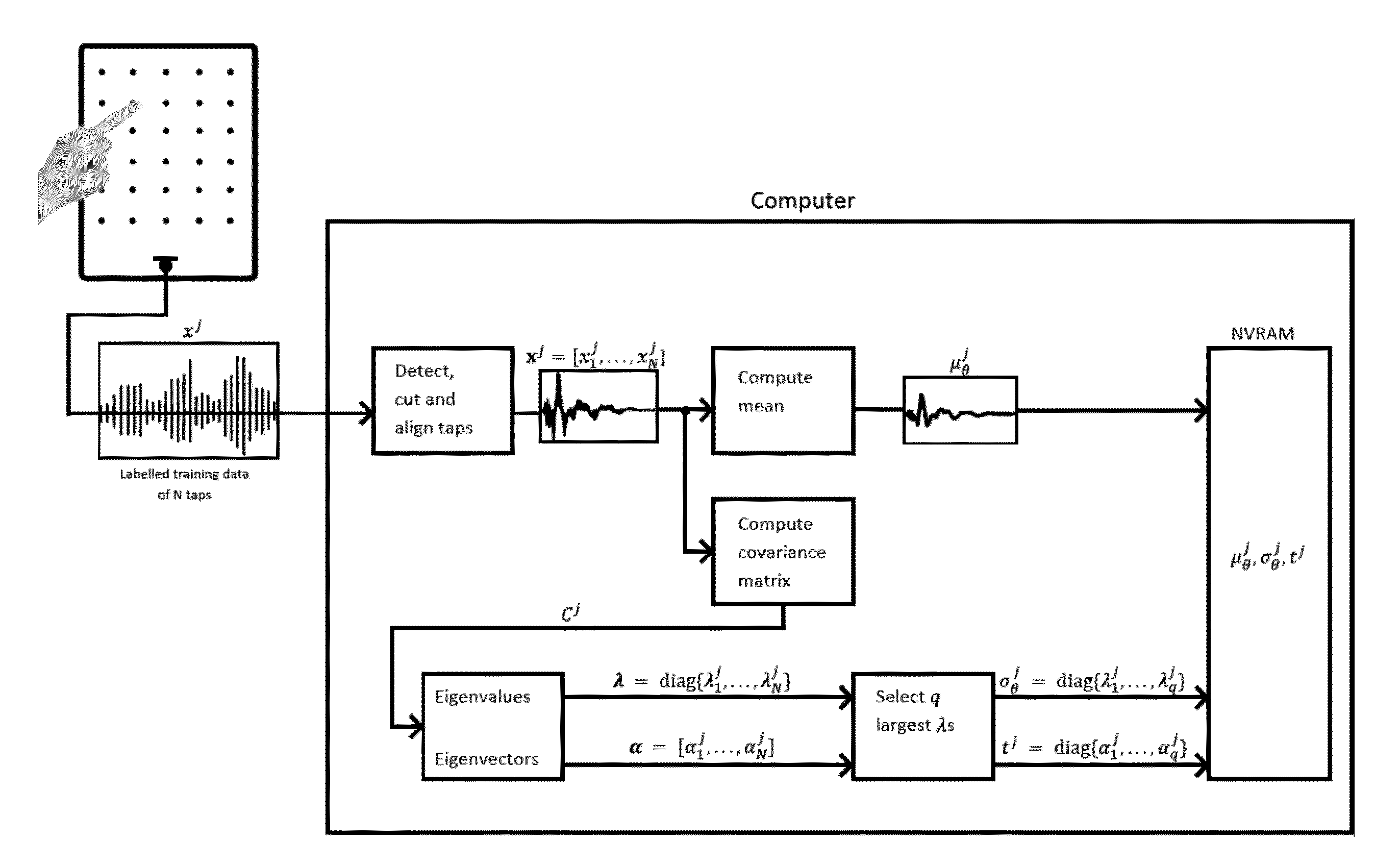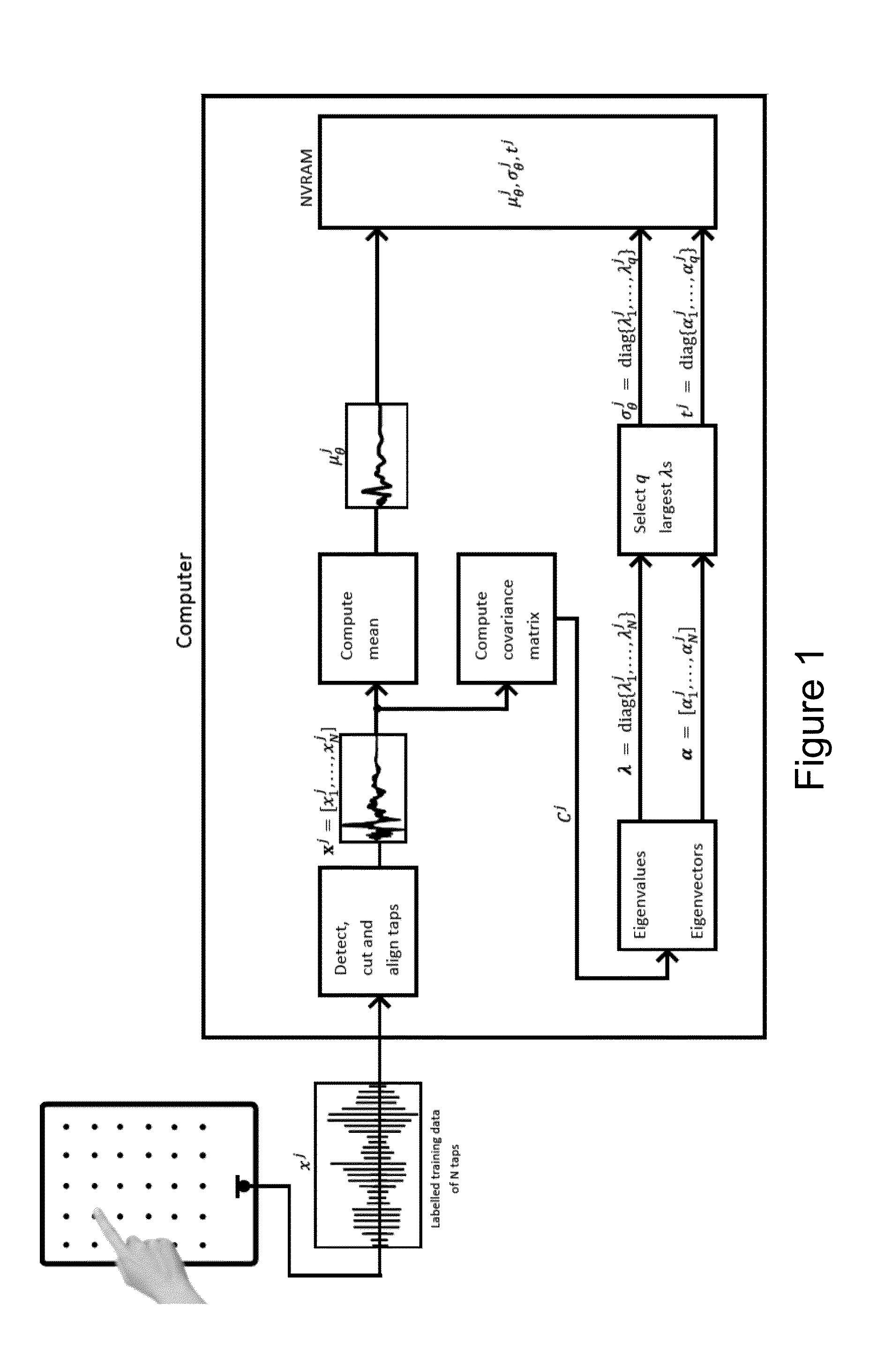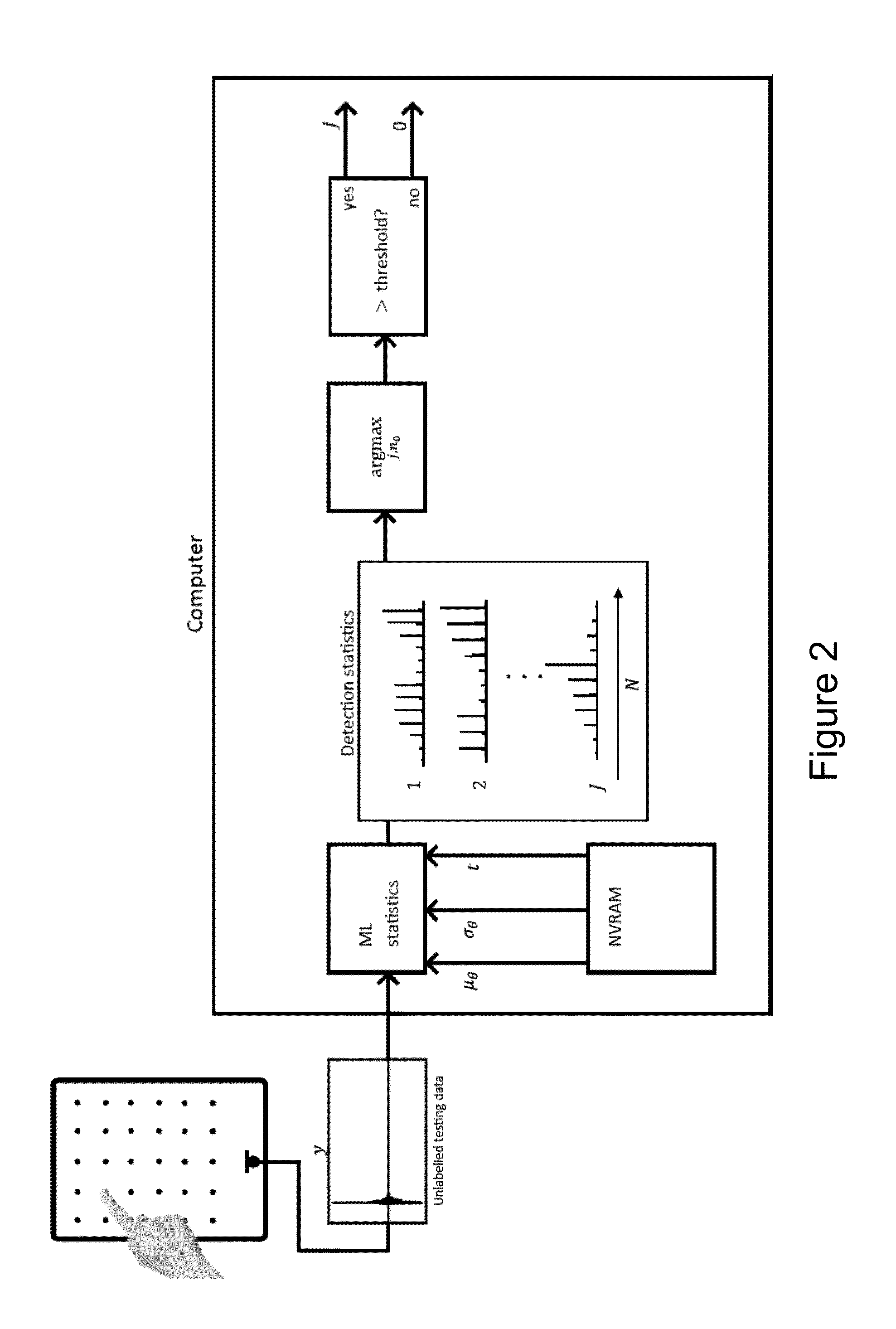Signal processing systems
a signal processing and signal technology, applied in the field of signal processing systems, can solve the problems of large difficulties in achieving reliable operation, waveform measurement, random variability, etc., and achieve the effect of computational intensive processing
- Summary
- Abstract
- Description
- Claims
- Application Information
AI Technical Summary
Benefits of technology
Problems solved by technology
Method used
Image
Examples
Embodiment Construction
[0075]Broadly speaking we will describe approaches which involve a training phase in which one or more users taps repeatedly in one or more tapping modalities (stylus, finger, different temperatures) at specified locations on the device—e.g. on a carefully measured lattice of points on the screen surface of a mobile phone. (It has been found that there is variability caused by changes of temperature and change of device, e.g. different mobile phones of the same model). A training algorithm then learns templates and parameters used for subsequent classification of the data.
Random Process Method
[0076]We first describe our random process method. The main idea here is to model the variability in tapping styles, style of handset holding, different handsets (of the same model type) and environmental conditions using a multiple component model, see for example the templates learned from the MAP method under different temperatures. It appears that the temperature has a significant effect on...
PUM
 Login to View More
Login to View More Abstract
Description
Claims
Application Information
 Login to View More
Login to View More - R&D
- Intellectual Property
- Life Sciences
- Materials
- Tech Scout
- Unparalleled Data Quality
- Higher Quality Content
- 60% Fewer Hallucinations
Browse by: Latest US Patents, China's latest patents, Technical Efficacy Thesaurus, Application Domain, Technology Topic, Popular Technical Reports.
© 2025 PatSnap. All rights reserved.Legal|Privacy policy|Modern Slavery Act Transparency Statement|Sitemap|About US| Contact US: help@patsnap.com



